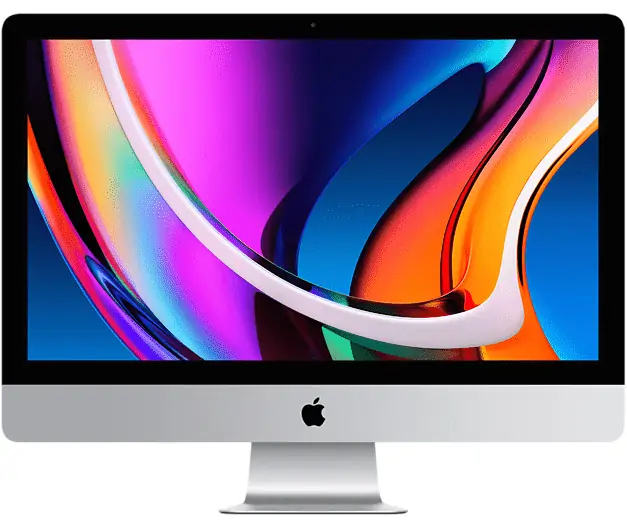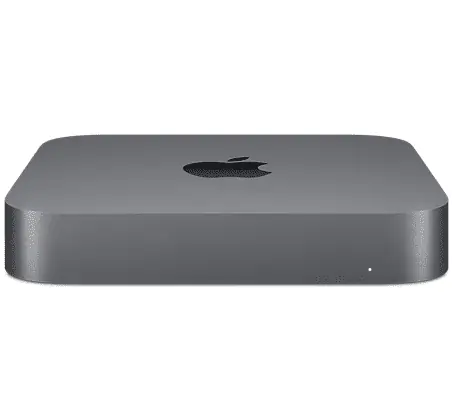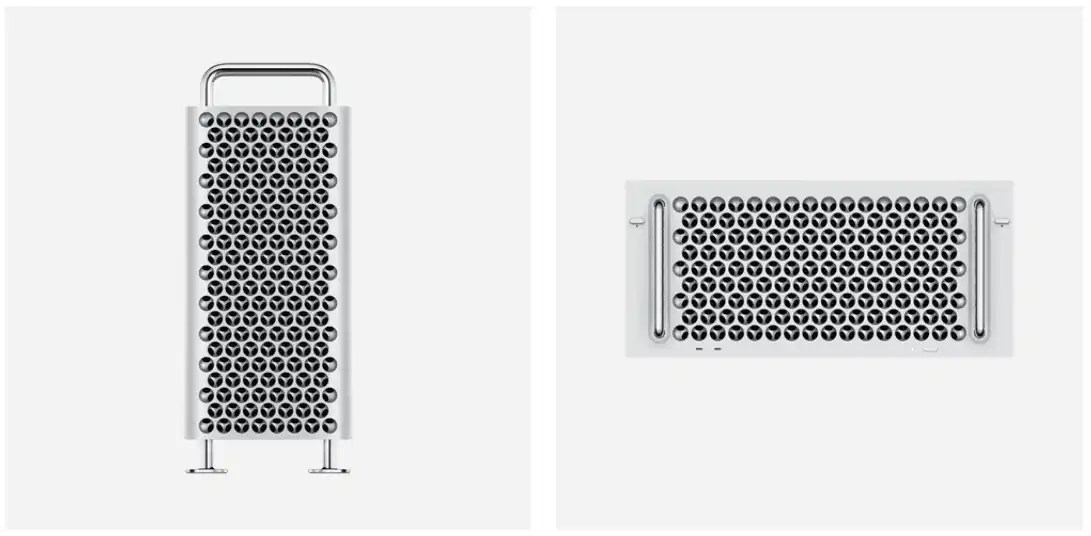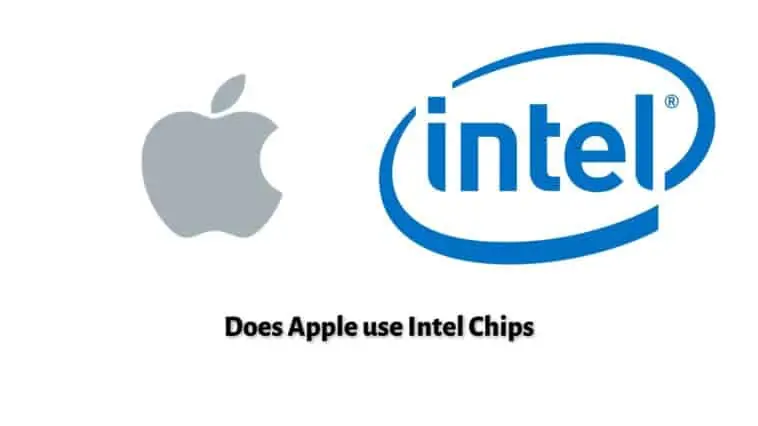Wondering whether you can still buy intel powered Macs or if Apple still produces Intel-based Macs? This article on does Apple use Intel Chips will explain all the questions you have regarding the subject.
Apple and Intel have been at the forefront of premium computing devices for years now and since it is coming to an end soon, many questions need to be answered. Does Apple use Intel chips, which Apple products have intel chips, what is the future of Macs, and more.
This article on does Apple use Intel chips will answer the above questions and more.
Read on to know more and what you should do when coming to choosing a new Mac for yourself or a loved one.
Check out: Apple Vision Pro vs Meta Quest 3 | Which Headset Should You Buy?
Does Apple use Intel Chips in 2024?
Table of Contents
No, Apple does not use Intel chips anymore. In 2020, Apple announced that it would be transitioning its Mac computers to its own custom-designed silicon chips, called Apple Silicon.
The first Macs with Apple Silicon were released in late 2020, and by the end of 2021, all Macs were using Apple Silicon.
The transition to Apple Silicon has been a success, with Apple’s own chips delivering better performance and battery life than the Intel chips they replaced.
As of today, the only Mac that still uses an Intel chip is the Mac Pro, which is still in the process of being transitioned to Apple Silicon.
It is expected that Apple will eventually phase out all Intel chips from its Mac lineup. However, the Mac Pro is a high-end machine that is used by professionals, so it may take some time for Apple to complete the transition.
Which Apple Products still have Intel Chips?
Apple still uses Intel chips in some of its products. And for some of these products, the Intel chips are alternatives while for some Apple doesn’t have an Apple Silicon counterpart yet.
Here’s the list of Apple Products with Intel chips,
iMac 27-inch
The good old 27-inch iMac has been a part of many households. This outdated design, especially when put against the new colorful 24-inch iMac with M1. You can choose between a 10th Gen Intel Core i5, i7, or i9 processor for these. You can equip these with up to 128 GBs of RAM and up to an 8 TB SSD.

For the graphics side of things, you can choose from AMD’s Radeon Pro 5000 series graphic cards. These iMacs also come with an excellent 5K Retina display and Ultrafast SSDs. These are still some of the most powerful All-in-One Computers, especially on the graphics side of things.
The base model starts at $1799 making it quite a bit more expensive than the 24-inch iMac, but you also get a bigger and better screen with more graphics power inside.
Mac Mini
The Mac Mini has also been a popular device for powerful computing that takes as little space as possible on your desk. This tiny machine also features Apple’s M1 chips but Apple offers you the choice to choose from Intel chips if needed.

You can equip the Mac Mini with an 8th Gen Core i5 or i7 processor, up to 64 GBs of RAM, and up to 2TBs of PCIe SSD storage. You also get Intel UHD 630 graphics embedded into the processor.
I wouldn’t recommend these over the M1 Mac Mini as they start at $1099 compared to the M1 Mac Mini’s base price of $699.
Mac Pro
This is the only device on Apple’s lineup of Macs that doesn’t have an Apple Silicon counterpart yet. The Mac Pro is the most powerful Apple computer yet, you can choose from a range of Xeon processors, with a max of 28 cores.

You can equip the Mac Pro with up to 1.5 TBs DDR4 ECC memory with the 28-core Xeon processor variant along with an 8TB SSD. For graphics, you can choose from AMD Radeon Pro graphics with up to 64 GBs of GDDR6 (on one card).
When fully specced, the Mac Pro has some serious power under the hood. It is developed for professionals that can take advantage of the specs. It is costly but it is one of a kind and it looks stunning as well.
Should you buy Apple products with Intel Chips
Now that you know which Apple products use Intel chips, should you buy any of them? I have hinted before that M1 Macs might be the better buy but it doesn’t mean Intel-powered Macs are bad or serve no purpose. There is a reason why Apple still sells Intel-powered Macs.
The main reason is compatibility with software. Since M1 Macs don’t support some software natively, it can only run them through Rosetta, which can affect performance negatively. So in such cases, Intel-based Macs will be the better choice, especially for professionals.
If you ask for my opinion, I would choose M1-powered Macs over Intel-powered Macs because they offer much more value. Apple has also promised native support for all apps meaning in the future you will experience apps running at full speed on Apple Silicon.
I would choose the 24-inch M1 iMac over the 27-inch Intel iMac for home use, because of the better design and single-core performance. If you are someone who needs multi-core and graphics performance over design, then choose the Intel iMac. Also, you will get a bigger screen.
If you are torn about which Mac Mini you should choose, then it’s simple, just get the M1-powered Mac Mini because there’s hardly any advantage for Intel Mac Minis. Intel Mac Minis also cost quite a bit more making it a poor choice unless App compatibility is necessary for you.
And finally, people purchasing Mac Pros will know exactly what they need, so get it if you can take advantage of all that power.
Why did Apple stop using Intel Chips
There are multiple reasons why Apple stopped using Intel chips. These include better integration, innovation, and profits. Apple is not new to the chip-making business, they have been making mobile processors for their iPhones and iPads. These are some of the fastest chips in the smartphone and tablet market.
Apple’s ARM-based processors on iPhones and iPads are not just fast but also incredibly efficient and part of this efficiency is thanks to tight integration between software and hardware. So when Apple realized that it can make faster chips with better efficiency than Intel, it had to try it. It may have been a huge risk, but for Apple, it has paid off.
Manufacturing reasons
In terms of production, Intel is lagging behind. The M1 chip in the new Macs features 5-nanometer transistors, Apple bragged on Tuesday.
“Five-nanometer is the leading edge of process technology right now and there are only a few products out at this point,” Gartner research director Jon Erensen said. Intel currently offers chips with transistors that are 10 nanometers thick.
In general, a chip’s efficiency increases with the number of transistors it can fit into a given volume. At the moment, Intel only offers chips with transistors that are 10 nanometers thick.
It is well known that Intel owns and operates its own “fabs”—factories—all over the world, in contrast to Apple, which hires firms in Asia to produce chips to its own specifications. However, TSMC, Apple’s partner in chip production, is able to produce 5-nanometer chips whereas Intel is unable to.
“Intel’s had some challenges over the last couple of years on the manufacturing side. And I think those challenges have opened a window of opportunity for ARM-based designs for come in. Apple is one of the best ARM-based processor designers out there,” Erensen said.
Bob Swan, the CEO of Intel, stated earlier this year that the company was thinking about outsourcing its manufacturing, similar to what Apple does.
“With the challenges that Intel has had moving to 10-nanometer and 7-nanometer while foundries like TSMC and Samsung have pushed more aggressively, it’s taken one of Intel’s key advantages and leveled the playing field a bit,” Erensen said.
Advantages and Disadvantages of not using Intel Chips
Apple Silicon is based on ARM and these are undoubtedly the future of computing. Apple’s first computer chip the M1 has been nothing short of remarkable, it’s fast, efficient, and cheap to implement for Apple.
With Intel struggling when it comes to creating chips with good energy efficiency, Apple just took the world by storm by releasing some of the most power-efficient chips ever. The advantages of M1 include software integration, efficiency, high single-core performance, good graphics performance, and low cost.
Compared to Intel Macs, their M1 counterparts are much cheaper.
A disadvantage when it comes to Apple Silicon is the lack of support for some apps to run natively, but Apple is working with developers to make sure there is no disadvantage as such.
As for security wise, nothing to worry about- according to Mac Security, since these are hardware as opposed to software security the latter is more vulnerable.
Other disadvantages include a lack of user upgradability because the processor, ram, and storage are unified. While this is beneficial for performance, it is not good for upgrading down the line, so users have to configure their devices for the future when buying.
And finally, since Apple is responsible for all the components of its Macs, it can charge whatever they want which is good in its way but if Apple wants to put itself first then it could screw customers over.
What is the Future for Macs and Intel
While there are Macs with Intel chips sold by Apple, Apple plans to shift its entire product catalog to Apple Silicon Macs only by the end of 2022.
The 15-year partnership between Intel and Apple is coming to an end but the future is bright.
With the past few years being poor for Intel, getting beaten comprehensively by both AMD and Apple, they are starting to turn a new leaf over with their 12th Gen processors. With AMD, Apple and Intel all trying to get a share in the processors market, we can be sure that they will push each other to the limits of performance and efficiency.
This is great news for customers like us, as the more competition the better it is for us. This year with Intel’s 12th Gen processors, Apple’s M2 chips, and AMD’s Ryzen 6000 series APUs, it sure looks like a great year to invest in a new computing device.
Mac computers with Apple silicon
Apple started switching Mac computers over from Intel CPUs to Apple silicon starting with a few models that were released in late 2020.
Mac computers with Apple silicon:
- MacBook Air (M2, 2022)
- MacBook Pro (13-inch, M2, 2022)
- Mac Studio (2022)
- MacBook Pro (14-inch, 2021)
- MacBook Pro (16-inch, 2021)
- iMac (24-inch, M1, 2021)
- Mac Mini (M1, 2020)
- MacBook Air (M1, 2020)
- MacBook Pro (13-inch, M1, 2020)
When using a Mac with Apple silicon, About This Mac displays a Chip item with the following information:
Select the Apple menu > About This Mac to open the About This Mac window.
About This Mac displays a section titled CPU, followed by the name of an Intel processor on Mac systems with an Intel processor. An Intel-based Mac is a Mac that uses an Intel processor.
Apple Devices Running on Intel vs Apple Silicon
Here is a detailed comparison between Apple devices running on Intel vs Apple Silicon
Performance
Apple Silicon:
Apple Silicon chips, starting with the M1, have set new benchmarks in terms of performance. For instance, the M1 chip in the MacBook Air provides up to 3.5 times the processing speed compared to its Intel Core i5 predecessor.
The introduction of M1 Pro and M1 Max chips in the MacBook Pro series has pushed the envelope even further, offering computational power that rivals high-end desktops.
Intel:
While Intel chips have been the backbone of Macs for years, they have started to lag behind in terms of raw performance, especially when compared to the newer Apple Silicon chips.
Multitasking and resource-intensive tasks like video editing can slow down noticeably on older Intel-based Macs.
Battery Life
Apple Silicon:
The battery efficiency of Apple Silicon chips is groundbreaking. The MacBook Air featuring the M1 chip boasts up to 18 hours of battery life on a single charge.
More impressively, the MacBook Pro models with M1 Pro and M1 Max chips promise up to 20 hours, setting a new standard for laptop endurance.
Intel:
Intel-based MacBooks generally offer good but not exceptional battery life, with most models averaging around 8-12 hours depending on the usage.
This becomes especially apparent when comparing the same tasks performed on both Intel and Apple Silicon-based devices.
Power Efficiency
Apple Silicon:
Not only are Apple Silicon chips more powerful, but they are also more efficient. They run cooler, thus requiring less active cooling, leading to quieter device operation.
This increased efficiency also translates into sustained performance without the risk of overheating.
Intel:
Intel chips, especially older generations, are not as power-efficient. Devices using these chips often require more robust cooling solutions, which can result in more fan noise and potential overheating during intense computational tasks.
Compatibility
Apple Silicon:
One of the greatest strengths of Apple Silicon Macs is their software compatibility. They can run virtually any application that was designed for Intel-based Macs, thanks to Apple’s Rosetta 2 translation layer, removing concerns about software limitations.
Intel:
Intel-based Macs have broad software compatibility but lack the ability to natively run iOS apps, a feature exclusive to Apple Silicon Macs.
Price
Apple Silicon:
Macs with Apple Silicon tend to be pricier initially, but this gap is starting to close. As the technology matures, Apple Silicon-powered devices are becoming increasingly cost-effective, especially when considering their superior performance and efficiency.
Intel:
While generally less expensive upfront, the lower initial cost of Intel-based Macs can be offset by their lesser performance and efficiency, potentially requiring sooner hardware upgrades.
Here is a table summarizing the key differences between Apple devices running on Intel vs Apple Silicon.
| Feature | Intel | Apple Silicon |
|---|---|---|
| Performance | Slower | Faster |
| Battery life | Shorter | Longer |
| Power efficiency | Less efficient | More efficient |
| Compatibility | Not fully compatible with all software | Fully compatible with all software |
| Price | Less expensive | More expensive |
| Overall | Good value | Better value |
Does Apple use Intel Chips – Conclusion
The shift to Apple Silicon on Macs is a move from Apple that is aimed to bring customers better performance, and more efficient, and affordable devices. While many expected the transition to be rough, it has been the opposite.
The new Macs are just what Apple promised to be, powerful, efficient, and affordable when compared to intel powered macs. The integration between hardware and software along with 5nm processor nodes make this a reality.
Does Apple use Intel chips? Yes, but only for a while. After that, Apple might not go back to Intel, but Intel still has the PC space where it is a major player. The future looks bright for us thanks to increased competition, let’s hope for competitive products too.
Read these tutorials:


